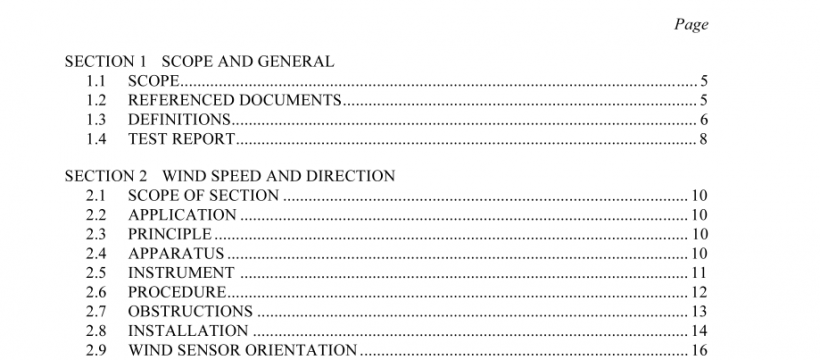AS NZS 3580.14:2014 pdf free download
AS NZS 3580.14:2014 pdf free download.Methods for sampling and analysis of ambient air
For wind measurements, acquisition of valid data requires frequent visual examination of the sensors. A site inspection should be conducted at an interval not exceeding three months. This examination is not ‘hands-on’; it is simply a visual inspection of the active shapes, cups, propellers, and vanes to ensure no physical damage has occurred. Sensitive wind instruments can be damaged by hail, birds and other adverse environmental conditions. The nature of an analogue recording or plot of collected data, if used routinely, will tell how the sensor is performing. Routine entries in the station log will provide the evidence of attendance to support validity claims. When conducting an onsite check the following should be considered:
(a) System components Cables, recorders, signal conditioning and data processing devices can often corrupt the sensor’s output. This may be checked by substituting the same signal as the sensor would produce. Alternatively, the sensor can be artificially stimulated (e.g. wind speed sensors can be driven by a motor) to achieve the same result. For example, if an anemometer gives 0.5 VDC. output with a wind speed of 30 m/s, then applying a 0.5 VDC. signal to the system should yield a 30 m/s indication at the recording device. Ensure that the recording system operates satisfactorily when the sensor element is in motion, and that the recorder indicates zero wind speed when the element is stationary. Similarly, a wind vane can be locked in a known orientation and the recording system checked to ensure that output is consistent with that position.
(b) Sensors A change in sensor characteristics leading to a deterioration in wind data quality may occur as a result of physical damage, bearing friction or degradation of the transduction process (for example, a reduction in output of a cup or propeller generator as a result of brush wear). The following tests should be carried out in order to detect major changes in equipment performance:
(i) Carry out a review of recorded data. Faults are indicated by incorrect zero, stepped traces due to friction, noise (which may be evident at low wind speeds), low sensitivity (at low speeds) and irregular or reduced variability of recorded wind.
AS NZS 3580.14:2014 pdf free download
